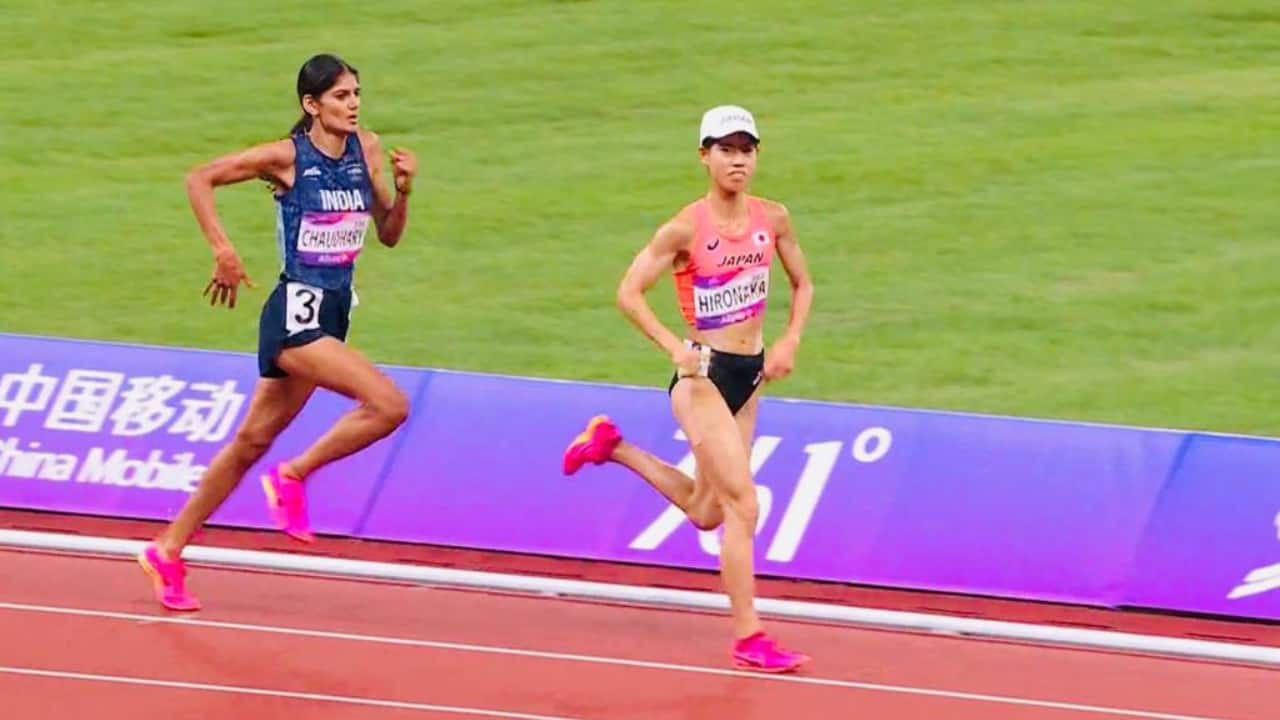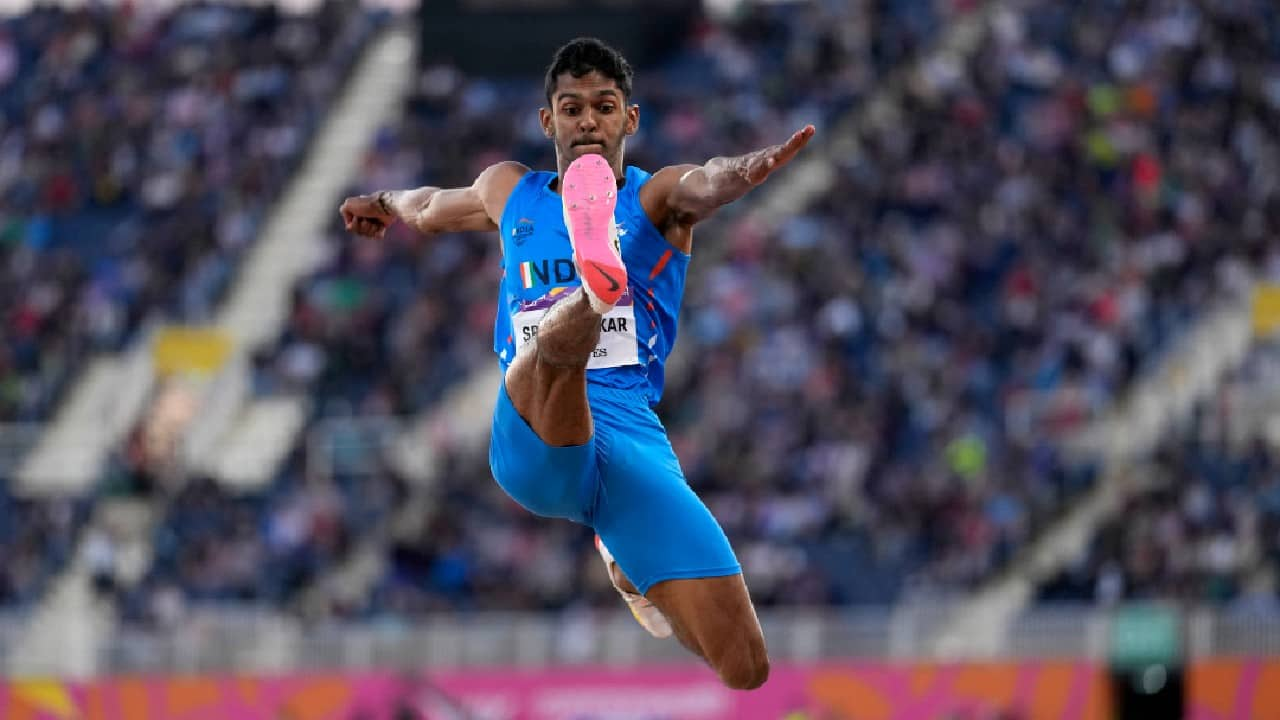



Six gold medals, 14 silver, and nine bronze. The numbers tell a heartening tale: this is India’s best-ever athletics performance at the Asian Games. On the back of that, it is also India’s best-ever performance at the Asian Games, 81 medals and counting, surpassing the previous best of 70 medals from 2018. India won two more gold medals at the 2018 Games in Jakarta in athletics than in the ongoing one in Hangzhou, where the athletics events drew to a close on October 4 (except for the marathon), but the overall haul has been bettered by a significant nine medals.
The other important takeaway from this performance is the depth and breadth of Indian athletics currently on show—of the 46 medal categories across men and women (excluding marathons), India won medals in 25 disciplines, including four in which there were two Indians on the podium. These medals came from those who were expected to dominate, like Neeraj Chopra, Avinash Sable and the men’s 4x400m relay team, but also from those who went to Hangzhou quietly, with no expectations, like Kartik Kumar in the 10,000m or Ancy Sojan in the women’s long jump; medals came from those making their Games debut, like Harmilan Bains in the 1500 and 800m, and those who were bringing a long career to an end, like the discus-thrower Seema Punia.
Here are our top seven athletics performances from Hangzhou. The criteria is not just the medal (otherwise, six of the seven would have to be the gold winning efforts), but also the promise shown, and the drama and quality of the event itself.
Neeraj Chopra vs Kishore Jena
What better place to begin than with the men’s javelin, where the drama began with Chopra’s very first attempt. Chopra is in the habit of recording his best with his first throw, earning him the sobriquet “one and done”, and here too, this seemed to be the case, as Chopra roared at the sky immediately after the release, and the spear seemed to land well beyond the 85m line. But while the Chopra’s attempt was still being measured, Kuwait’s Abdulrahman Alazemi executed his throw. This, apparently confused the officials and Chopra’s throw was not measured. Instead, the Indian thrower was offered a new beginning. Chopra took it, and threw an unhappy 82.38m.
Then, compatriot Kishore Jena’s second attempt was flagged illegal, even though he was well within his line. Chopra urged Jena to take it up with the officials, and the decision was overturned.
In his third throw, Jena did the unthinkable—with a personal best of 86.77m, he overtook Chopra in the lead. Chopra responded like the champion he is, with his season’s best, a massive 88.88m. It remained like that, with Chopra taking the gold and Jena the silver in a historic Indian 1-2 in the javelin.
Spectacular, but not entirely unexpected. India has seen an incredible surge in the javelin ever since Chopra’s 2021 Olympic gold. At the 2023 Athletics World Championships, we saw the proof of that, when two other Indian throwers—Kishore Jena and D.P. Manu—made it to the 12-man final, a first for India. Jena threw his personal best of 84.77m at the final, and finished fifth. Now the thrower from Odisha has bettered his own mark by a big margin, taken silver on Asian Games debut, and qualified for the Paris Olympics.
With Annu Rani’s dominating Asian Games javelin gold also in the bag, it is hard to imagine a single sporting discipline in India that has shown as rapid and as wide a rise as javelin, where we have gone from no presence at the elite level 5-6 years ago to dominating and swamping the field in 2023.
Avinash Sable
The man who has broken the 3000m steeplechase national record nine times and put India on the world map in the event, has had an up-and-down season, making history with a Commonwealth Games silver medal in 2022 to break a 25-year-old stranglehold by Kenyans in the event, and then making a shock exit in the qualifying at the 2023 Athletics World Championships. He left all of that behind to make the Asian Games race his own, dominating the field from the start and setting the Games record without taking one wrong step. Then he upped his game by running the 5000m, his first attempt to complete two races in a single event, and winning the silver. The season’s last race for Sable will give him all the psychological boost he needs to begin his Paris quest.
Parul Chaudhary
If Sable dominated the men’s 3000m steeplechase, here’s another athlete on a steep developmental curve. Parul Chaudhary, the 28-year-old distance runner from Meerut, UP, who is also Sable’s training partner, set the 3000m national record last year, becoming the first Indian to go below nine minutes in the event, then broke the 3000m steeplechase and the 5000m national record this year, with her timings inching closer and closer to the best in the world, and an Olympic quota in the pocket.
Chaudhary simply continued with her sensational form in Hangzhou, bagging the steeplechase silver, and then, in one of the best races she has ever run, she pulled off a spectacular last 50m dash in the 5000m to win an unexpected gold.
 Parul Chaudhary (in blue) ran 5000m in 15:14.75 to win gold at the Asian Games 2023. (Photo via X/@Media_SAI)
Parul Chaudhary (in blue) ran 5000m in 15:14.75 to win gold at the Asian Games 2023. (Photo via X/@Media_SAI)
Men’s 4x400 relay team
Remember the names—Muhammed Anas Yahiya, Amoj Jacob, Mumammed Ajmap and Rajesh Ramesh—India’s 400m quartet make a blazing team that’s making the world sit up and take notice. The Asian Games were a breeze for the four, who wrapped up an easy win for the gold, a few days after Ajmal and Ramesh had grabbed the 4x400 mixed relay silver with Vithya Ramraj and Subha Venkatesan. But all of this was to be expected, because the quartet had shown, just a couple of months ago at the World Athletics Championship in Budapest, that they had left the Asian competition behind by finishing fifth behind USA, Great Britain, France, and Jamaica. In the heats at Budapest, the team had also run a fantastic race where they pushed the US quartet—by far the best in the world—to finish a close second.
There is still some way to go before India’s timings in this event can challenge the established superpowers, but they have one foot in the door.
Harmilan Bains
In the women’s 800m finals at Hangzhou, it all came down to the final bend. This is when China’s Wang Chunyu, who had led the race from the start, decided to break off from the pack and extend her lead. An already intense race went into overdrive in a flash, as all the runners went for the final push, and the front four instantly opened up a big gap. In the fourth position was Bains. As Wang saw her lead disappear to Sri Lanka’s Tharushi Dissanay, Bains kept pushing, going past China’s Rao Xinyu, and then Wang, storming to a silver finish.
In her debut at the Asian Games, or for that matter, any major international event, Bains finished with two silver medals, the 800m one came after a silver finish in the 1500m.
What makes this all the more special is that Bains’ mother Madhuri Saxena had won the 800m silver at the 2002 Busan Asian Games, and finished fourth in the 1500m.
If her mother was at the end of her career in 2002, the 25-year-old Punjab runner is just getting started. Bains had an early start to her athletics career (no surprise there, her father too is a former 1500m national champion), but a major knee injury in 2017 derailed her for over a year. It wasn’t till 2019 that Bains started racing seriously again, and riding past the pandemic-enforced disruption, she had a breakthrough year in 2021, where she set the national record in the 1500 and became national champion in the 1500 and 800m. Then the knee injury struck again, and 2022 was lost.
This year then, is both a comeback and a step up for Bains—a season to remember and build on.
 Murali Sreeshankar won a silver at the 2022 Commonwealth Games, and then again at the 2023 Asian Games. (File)
Murali Sreeshankar won a silver at the 2022 Commonwealth Games, and then again at the 2023 Asian Games. (File)
Murali Sreeshankar
Murali Sreeshankar’s fledgling career has already seen its share of wild highs and lows. In 2018, the then 19-year-old Sreeshankar had made waves on the national circuit, and with a 7.99m personal best, had made it to the Commonwealth Games squad, only to pull out 10 days before the event with appendicitis which needed immediate surgery. A couple of months of struggles with recovery followed, where he had to battle the weight and strength loss from the post-surgery liquid diet he was put on, but he made it to the 2018 Asian Games in Jakarta, where he struggled on the big stage and finished sixth. For the next few years, Sreeshankar established himself as India’s best long jumper, breaking the national record multiple times at home, and qualifying for the biggest of events like the world championships and the Olympics. Once on the big stage, though, the man from Palakkad, Kerala, faltered. It took only a couple of events before that reputation clung to him, including a failure to cross even 8m and qualify for the finals at the Tokyo Olympics.
Since last year, Sreeshankar seems to have finally broken that jinx. He crossed 8m to win a silver at the 2022 Commonwealth Games, becoming the first male jumper from India to do so in the history of the Games, and this year, at the Asian Games in Hangzhou, he did one better. With three out of his six jumps in the final at Hangzhou registering 8m and above, and winning the silver with a 8.19m jump, Sreeshankar proved that he can pull out the big jumps at the big meets. He has it in him to push for an Olympic medal, if he can maintain this consistency.
Ancy Sojan
Looking at Ancy Sojan jump at the Asian Games in Hangzhou, it would be impossible to tell that it was only the second international competition for the 22-year-old from Thrissur, Kerala.
Sojan sang to herself, smiled at the camera, danced on the track and pumped herself up without inhibition. She found the time and space to also stand behind her compatriot Shaili Singh before each her jumps and offer her words of encouragement.
Then Sojan pulled off some of her best jumps yet, a 6.49m followed by a 6.56m to eclipse her personal best, and then going past that with a 6.63m jump that ensured her a silver medal in a tough field.
A promising 100m and 200m sprinter who has only recently begun to focus on the long jump, she has crossed the 6.5m-mark consistently this year in domestic competitions, and shown that she has the verve and the nerve to not just repeat that, but also better it, on the international stage.
With national record holder Shaili Singh continuing to be India’s best female long jumper, the stiff domestic competition is sure to push both Singh and Sojan to greater heights, or, to be accurate, greater distances.
Discover the latest Business News, Sensex, and Nifty updates. Obtain Personal Finance insights, tax queries, and expert opinions on Moneycontrol or download the Moneycontrol App to stay updated!
Find the best of Al News in one place, specially curated for you every weekend.
Stay on top of the latest tech trends and biggest startup news.